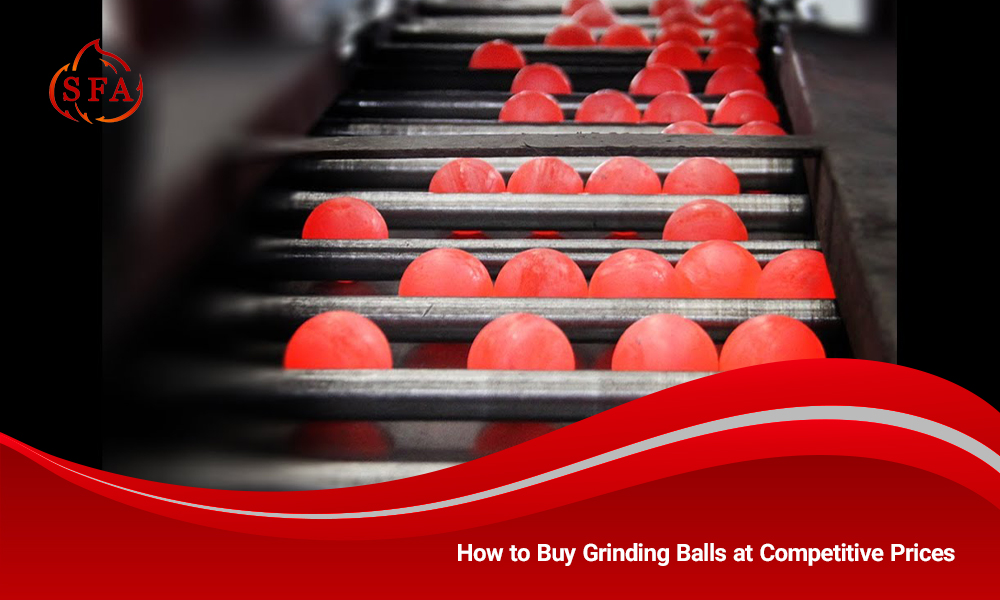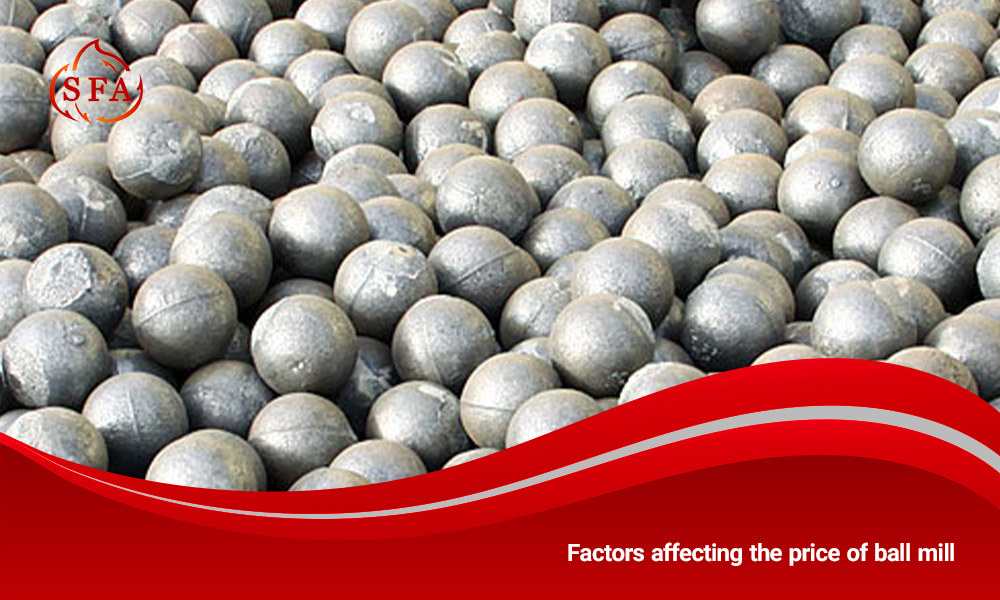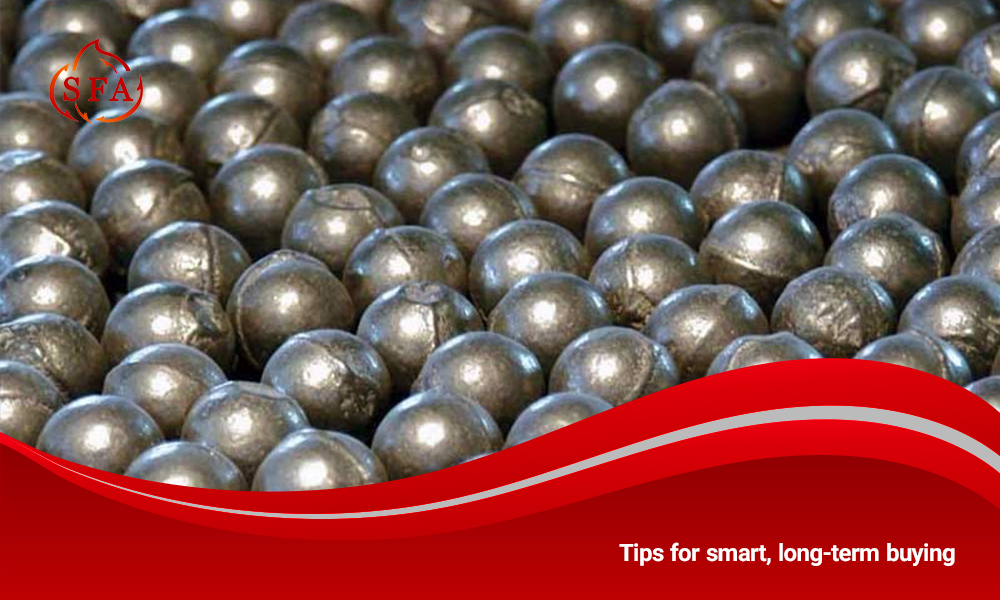

How to Buy Grinding Balls at Competitive Prices
Ball Mill Balls are compact metal and alloy components used to crush and pulverize minerals in mining, cement, and steel industries. In fact, ball mills are rotating cylindrical chambers that are responsible for reducing the size and mixing of materials by filling the tank with grinding balls and their impact on the material being ground.
Since the right price for purchasing these parts is of great importance for industrial plants, the phrase How to Buy Grinding Balls at Competitive Prices indicates the focus of this article on finding practical methods and tips for supplying grinding balls with the highest quality and lowest cost. In the following, from the Atashgah Sepahan Steel Foundry Industries website, we will first introduce the types of grinding balls and their applications and then examine the factors affecting the price, ways to find competitive prices, reliable domestic and foreign sources of supply, common mistakes in purchasing and key points for a smart and long-term purchase.
Introduction to grinding balls and their applications
Mill balls are usually made of high-chromium steel or hard cast iron with high wear resistance. Atashgah Sepahan Steel Foundry, a leading company, produces its mill balls in three types:
• Low-Cr Steel BallsSuitable for cement industries and some mines
•Cast iron pellets suitable for steel mills
• White Iron BallsEconomical and durable, suitable for wet grinding and mines with high consumption
Ceramic balls, usually made of aluminum oxide or zirconia, are used in specific applications.
They are inert and cause minimal contamination in grinding chemicals and pharmaceuticals.
The size of grinding balls ranges from a few millimeters to over 125 millimeters.
Size is chosen based on the volume and type of mill.
The most important applications of grinding balls include the following industries:
Grinding balls are widely used across multiple industries.
In the cement industry, they play a key role in pulverizing cement clinker into fine powder.
Within the mining industry, these balls are essential for crushing ores such as gold, copper, and iron.
The chemical industry also relies on them to grind raw chemicals into usable forms for product manufacturing.
Meanwhile, in the pharmaceutical and food sectors, grinding balls help transform spices, medicines, and cocoa into ultra-fine powders.
Finally, the ceramic and powder metallurgy industries use them to refine ceramic and metal materials, ensuring high-quality ceramic products and uniform metal powders.
In general, ball mills are versatile machines that are used wherever there is a need to reduce particle size and mix materials uniformly.


Factors affecting the price of ball mill
The price of a ball mill is influenced by several key factors. The most important of these factors are:
- Chemical analysis and chromium percentage: Higher chromium in the alloy usually increases the durability and wear resistance of the ball
- A Ball size and dimensions: Larger balls require more material and are more expensive (for example, 125 mm balls compared to 15 mm balls).
- Manufacturing method and metallurgical quality: Forged balls are usually of higher quality and strength and are more expensive than cast balls.
- Raw materials and market fluctuations: The price of chromium steel and ferrochromium alloys depends on global metal market fluctuations. Exchange rate fluctuations also play a significant role in the imported supply of these materials.
- F Standards and certifications: Balls with quality approvals, hardness certificates and metallographic certificates usually have a higher price but provide a guarantee of performance.
- Supply and demand: Prices increase during times of high industrial demand or due to sanctions and import restrictions; in return, bulk purchases and long-term contracts may offer discounts.
Understanding these factors helps buyers consider not just the numbers, but also quality and market conditions.
Click to read the article «Forged Steel Grinding Balls: A Complete Guide».
Ways to find competitive prices
To answer the question of How to Buy Grinding Balls at Competitive Prices and find the best prices, a buyer should use several methods. Some practical solutions include:
- Inquiry from multiple suppliers: Inquire prices from both domestic and foreign suppliers to get an accurate comparison of market averages.
- Bulk buying and negotiation: Bulk purchases often get discounts. By planning your monthly or annual mill requirements and negotiating long-term contracts, you can reduce the unit price.
- l Use B2B systems and exhibitions: International trade sites (such as Alibaba) and mining and machinery industry exhibitions are good opportunities to compare price and quality. Also, government tender systems (such as the “Iran Procurement” system) can provide a list of official suppliers.
- Review alternative offers: Sometimes products such as ceramic balls or alloys with different chromium percentages can meet your needs at a lower cost. From an economic point of view, weigh these options against the quality compromise.
By using a combination of the above methods and gathering price information from various sources, the possibility of purchasing ball mills at a competitive price increases significantly.
Common mistakes when buying
When faced with the question of How to Buy Grinding Balls at Competitive Prices, some buyers may make the following mistakes that they should avoid:
- Relying solely on low price: Focusing solely on the lowest purchase price can increase long-term costs.According to an industry expert, true cost-effectiveness depends on durability and mill performance compared to price.A ball that wears out quickly and needs frequent replacement may cost more than a slightly pricier, longer-lasting one.
- Relying on a single brand is risky. Getting only one quote may result in a higher price. It is necessary to inquire about multiple suppliers and compare based on performance history and customer reviews.
- Not asking for quality certificates: The buyer should obtain laboratory certificates (chemical analysis, metallography, and hardness) before purchasing. Buying without this information (or accepting minimum industry standards) increases the risk of receiving poor quality goods.
- Incorrect ball type selection: Choosing a ball with an inappropriate chromium percentage or material for the type of mill and mineral will reduce efficiency and increase costs. For example, using white cast iron balls in a dry mill is not suitable.
- Lack of a long-term inventory plan: Buyers who do not have sufficient inventory and have to buy in emergency situations usually pay more. Inventory management and consumption forecasting can prevent the need for urgent purchases at high prices.
By avoiding these mistakes and paying attention to quality factors, the buyer can increase his chances of achieving a real and optimal price.
Tips for smart, long-term buying
To answer How to Buy Grinding Balls at Competitive Prices in a smart and sustainable way, the following tips are helpful:
- Assess the “Cost per ton”: In addition to the purchase price, calculate the wear rate of the balls (e.g., grams consumed per ton of grinding). As mentioned, the true cost determinant is the combination of wear rate and grinding efficiency relative to the product price. As a result, balls with a longer life may be more economical in the long run.
- Request test reports: Ask the vendor for standard test results (such as hardness testing, mill weight loss testing (MBWT), and XRF analysis). The accuracy of the product’s compliance with the declared specifications should be proven before purchasing.
- Long-term contract with the supplier: If you have a steady consumption, enter into a one-year or multi-year contract. Most companies offer discounts for long-term commitment and reduce sudden changes in material prices over time.
- Buy at the right time: Raw material prices often change seasonally or periodically. If possible, purchase part of the requirement at times when prices are lower. Also protect yourself from currency fluctuations with financial methods (such as buying currency in advance).
- Proper storage of balls: Proper storage (dry and covered) prevents rust and quality loss. Before use, store the balls with appropriate oil or anti-rust coating so that they are in optimal condition when received.
- Consult with the technical team: In the final decision, consult with technical experts in grinding and metallurgy. Asking about the experiences of other similar industries and using analysis services can help make the optimal choice.
By following these tips and taking a strategic approach to buying grinding balls, buyers can make a cost-effective and durable purchase.


Atashgah Sepahan Steel Foundry Industries: A reliable source for domestic and foreign purchases
In selecting suppliers, priority is given to reputable companies and brands. Our company, Atashgah Sepahan Steel Foundry Industries, has a long history in producing anti-wear steel and cast iron balls. In our company, various types of chrome and white cast iron balls are produced with high quality control.
In our company, quality and customer trust are always a priority. Using modern technologies and strict quality control, our team produces chrome and white cast iron balls for multiple industries.
Under the guidance of Mohsen Ahmadi, an experienced and committed CEO, our company has been able to establish its position as one of the reliable sources of domestic and foreign purchases. You can click on their names for expert advice.


